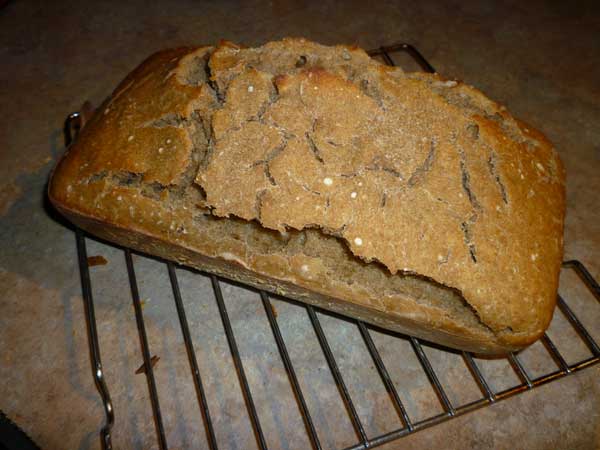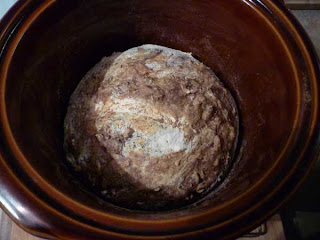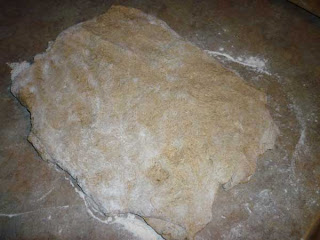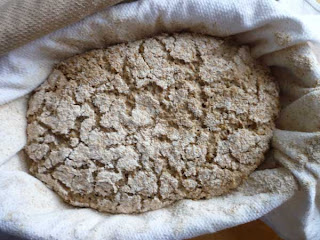My Top Ten Bread Failures for 2010
It has been just over 1 year since I started making bread in earnest and with any regularity, and I have been blogging both successes and failures since February 2010. It is actually more fun to look back on the total disasters I have created, rather than the good loaves. The failures tend to be more memorable. Here is a list of my top ten (there are a LOT more than just these 10, it was hard to narrow down the field. But the top ten failures had to lose in virtually every criteria. For example, the loaf that my mother-in-law broke her tooth on was actually a pretty nice loaf, and so it doesn't make this list).
Without further ado, here are my top ten bread failures for 2010:
10.
Dough transfer error that not only made for a very ugly loaf, it also burned up one of my oven mitts. It was a disaster because I tried to bake too many loaves at once, and I got distracted when I was placing the loaves in the hot oven. The loaves tasted bad, but it might have been because of the flavour of the burning mitt, who knows? They weren't pretty, either.
The Burnt Oven Mitt. The Ugly Bread that resulted is at the top of this page.
9.
A German No-Knead bread, that supposedly required no preheating of the casserole dish that it was in. Well, that's a bad idea, the casserole dish definitely needs to be preheated too. Did I mis-translate that recipe?
What happens when you don't preheat the casserole dish for the no-knead bread
8.
HBin5 bread made from pumpkin puree. One of the many loaves that I've made that are underbaked, and have caves in the middle. Sometimes it doesn't show up until days later when I'm eating the loaf. I have invested in an internal thermometer, I just haven't got around to using it yet.
Another underbaked loaf: strange gooey cave in the middle of the loaf.
7.
A loaf that fell apart when I shook it from the pan. This has happened more than once, but this was the worst. Very upsetting, especially when the loaf takes several days to build. Another symptom of underbaking, I presume.
Shaken baby syndrome: disaster when this bread, my baby, is shaken from the loaf tin
6.
This was one error after another, starting with the mistakes I made in the hydration of my starter when I was refreshing it. Every fix I attempted, it just made things worse.
Hydration error
5.
This was one of those 'detox loaves' that I've experimented with: the idea being, you make the bread a whole wheat loaf by using the all purpose flour but adding swirls of bran and germ in the middle of the loaf. This one got mouldy before I could eat it.
Mouldy bread
4.
The Seventh disaster was supposed to be a 'Strong Rye Bread", but it turned out to be a 95lb weakling that got sand kicked in its face at the beach. I didn't follow the directions. One of my earlier rye attempts. Rye still intrigues me and frustrates me.
What happens when you ignore the recipe methods and just follow the recipe ingredients
3.
This disaster was supposed to be a Lombardy loaf, made for Easter. The pressure was on, but my bread was a failure. This one didn't bake long enough, and was so gooey inside it was inedible. My wife took over and baked one that turned out a trifle dark. I guess she just wasn't taking any chances.
Utterly gooey inside, not even a little bit baked
2.
An oft-repeated bread failure, that I just don't seem to be able to learn from: but this was the first time I tried to use my old, depleted mother-starter in a recipe.
Sourdough discard bread: why use the discards, why not use the unspent sourdough?
1.
And the number one bread failure for 2010: this one is fairly recent, proving that I really haven't learned anything at all! What didn't go wrong in this bread (if you can call it bread, which probably you shouldn't).
The most misshapen and under-baked loaf of all: worst of the worst of 2010









































































